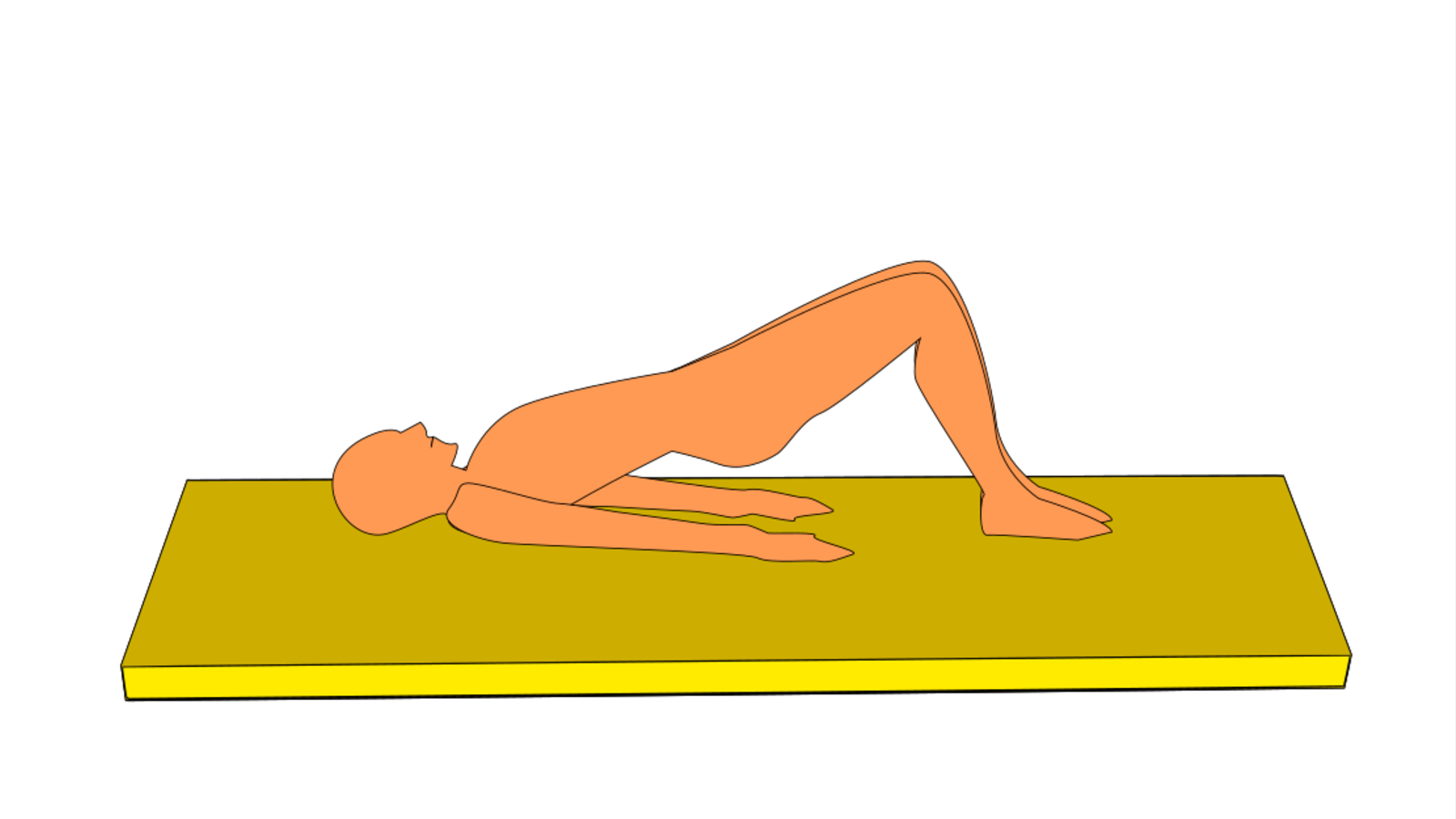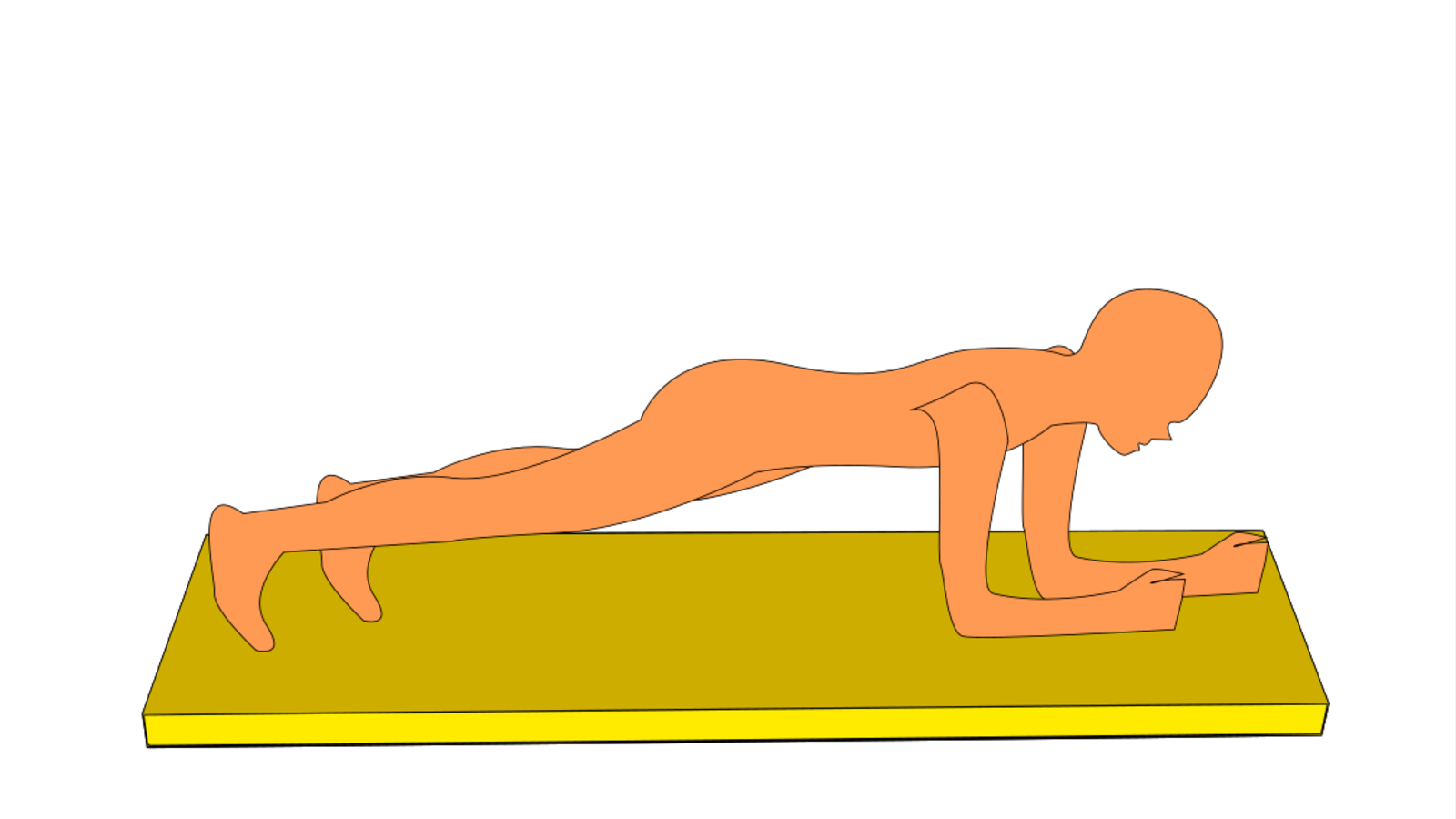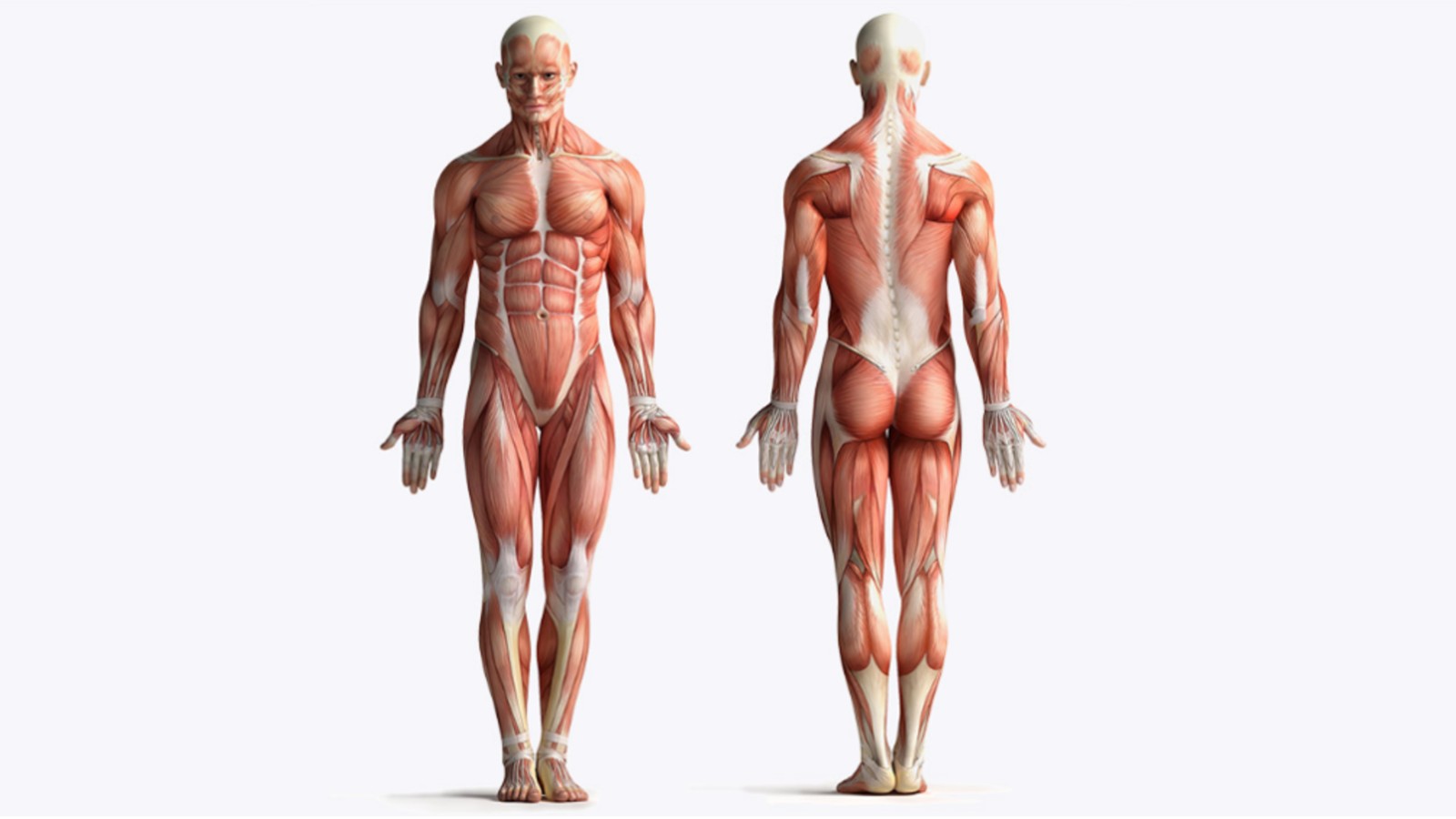Posture can be defined as the position assumed by the body while an individual is standing, sitting, or lying down. An individual’s posture develops from the habitual positioning or configuration of his or her body. Poor posture is sometimes caused by a hereditary condition, however, for most people, it is the result of daily activity.
If the posture is poor, it triggers certain muscle imbalances that produce weak areas in the body, affecting functional movement (movement efficiency) and possibly causing pain, stiffness, and discomfort. It also increases the risk of falls and injury due to a reduction in core stability if local muscles are imbalanced.
Symptoms of poor posture are:
-
Rounded shoulders.
-
Hunched back.
-
Potbelly.
-
Bent knees when standing or walking.
-
Head that either leans forward or backward.
-
Back pain.
-
Body aches and pains.
-
Muscle fatigue.
-
Recurring headaches.
-
Reduced ability to maintain balance and coordination, with an increased risk of falls and subsequent injury.
It is important to ensure muscles are developed in the correct manner to ensure ideal postural alignment is maintained and supported. This may include methods such as posture training, stretching and core strength building.
These are disorders that affect structural or functional ability occur during intrauterine life (during pregnancy) and may be caused by hereditary/genetic influences. These conditions are sometimes detected in early infancy, childhood or early teenage years.
Examples affecting the musculoskeletal system include:
-
Scoliosis - Sideways curvature of the spine.
-
Hip dysplasia - Hip socket doesn't fully cover the ball portion of the upper thighbone, causing partial or complete dislocations.
-
Club foot - Foot is twisted out of shape or position.
These disorders require professional medical and/or allied health care treatment. Physical exercise can be undertaken, however, collaboration with professional personnel is highly recommended.
Skeletal muscle consists of three types of muscle fibres when these fibres are combined with motor neurons they are referred to as motor units:
-
Type 1 - (often called 'slow-twitch') - Are red in colour due to having high concentrations of mitochondria and myoglobin and are surrounded by capillaries. Mitochondria, myoglobin, and capillaries help in the rapid transportation of oxygen to the muscle fibres using the aerobic energy pathway which means type 1 muscle fibres are fatigue-resistant and are capable of repeated low-level contractions. The primary purpose of type 1 fibres is to help maintain posture and contribute to balance by sensing position (a process known as Proprioception) and relaying this information to the brain. In regards to exercise capability type 1 muscle fibres are effective for endurance exercise like marathon running.
-
Type 2A - (often called 'fast oxidative', a hybrid variety of type 1 and type 2) - They are also red in colour and contain high quantities of mitochondria and myoglobin. They utilise both aerobic and anaerobic means to generate and split ATP at a fast rate which fuels the muscle cell contraction process (sliding filament theory). This fast production of ATP enables fast strong muscle contractions. However, they are more prone to fatigue than type 1 fibres.
-
Type 2B - (often called 'fast glycolytic') - They are white in colour due to lower concentrations of mitochondria and myoglobin and are not surrounded by as many capillaries, meaning they are prone to fatigue. They produce ATP at a slow rate through anaerobic means and utilise it very rapidly. They are used for fast-paced or sudden burst movement and activity. However, this type of muscle fibre is very prone to fatigue. Resistance training can turn type 2B muscle fibres into type 2A.
Muscle cells which are exercised regularly followed by sufficient recovery time and which receive adequate amounts of dietary protein undergo a reaction known as Hypertrophy. There are two types of hypertrophy:
-
Myofibrillar - The growth of new and improved muscle cells as a result of damage sustained during exercise. This type of hypertrophy will increase muscle strength.
-
Sarcoplasmic - The increase of glycogen storage capabilities within the muscle cells. This type of hypertrophy will increase muscle endurance.
Over time, poor posture that demands support from phasic fibres causes the deeper supporting muscles to waste away from lack of use. Weak, unused muscles tend to tighten and this shortening of muscle length can compact the bones of the spine (vertebrae) and worsen posture.Better Health Channel (Victoria State Government)
Effectively means certain muscles in the body are stronger or more developed than others. This imbalance can be caused by:
-
Sedentary lifestyles.
-
Improper exercise technique.
-
Repetitive movements.
-
Wearing high heels.
-
Stress.
-
Tilting of the head downwards to use a hand-held device.
-
Prior injury, in which certain muscles were temporarily out of action and thus other muscles compensated.
-
Certain congenital diseases and conditions.
Sedentary lifestyles, whether voluntary or involuntary (due to a disability, injury, or illness) often result in excessive amounts of time in a seated position which causes the hip joint to be flexed for long periods. This position, among others, can cause certain muscles to tighten and others to weaken resulting in an overall loss of muscle strength, endurance, and function through lack of movement and conditioning. This inactivity and weakness can compact the bones of the spine (vertebrae) and worsen posture.
Connective tissue supports, protects, and gives structure to other tissues. Types of connective tissue include:
-
Bone.
-
Cartilage.
-
Blood.
-
Ligaments.
-
Lymph.
Poor posture can cause the load-bearing balance of the joints and bony structures to become disrupted, resulting in connective tissue being worn down. This can result in conditions such as osteoarthritis, headaches, and tension which can be very painful.
Joints and muscles which have damaged connective tissue can become stiff, experience limited flexibility, and in some cases, joints may freeze into unnatural and painful positions, which inturn further exacerbates poor posture, albeit this time in a chronic manner.
Often caused by repetitive actions over time or as a result of an acute injury this condition effectively means that the surfaces of a joint are not properly aligned which leads to poor movement capability.
Severe forms of joint misalignment include dislocation or sub-dislocation, however, there are more subtle instances of misalignments which can cause :
-
Nerve damage such as numbing and tingling.
-
Inflammation.
-
Pain.
Chiropractors tend to treat the more subtle instances of joint misalignment whereas medical doctors will treat dislocations.
Structural and functional variances refer to a general impairment of bodily systems and parts in its anatomy (structure) and/or its operation or purpose (function) causing adverse health consequences.
The ideal postural alignment of the human body is illustrated below. A straight line (plumb line) runs down the body, intersecting several key joints and other body reference points. Click on the various markers to read more information about each intersecting point and the various structural and functional issues which are associated with each section.
There are five sections of the spine:
-
Cervical Spine - The neck region, consists of seven vertebrae (C1 - C7). This section of the spine naturally curves slightly inward if viewed from the side (known as a Lordotic Curve). Some people have a condition known as Military Neck in which the cervical spine is straight giving the impression that they are standing to attention. It can be caused by degenerative disc disease, birth disorder or body trauma.
-
Thoracic Spine - Begins directly below the cervical spine, consists of 12 vertebrae (T1 - T12). This section of the spine naturally curves outward if viewed from the side (known as a Kyphotic Curve). The natural curvature should be between 20-50 degrees, anything larger is considered to be hyperkyphosis (or too much kyphosis) and presents as a hunched or stooped forward posture (ie. hunchback).
-
Lumbar Spine - Forms the lower back, consists of five vertebrae (L1 - L5). This section of the spine naturally curves slightly inward if viewed from the side (similar to the cervical spine), too much curvature in this region results in a condition known as Swayback.
-
Sacrum - A bony structure that is shield-shaped, located at the base of the lumbar spine, it is connected to the pelvis. It consists of five vertebrae (S1 - S5) that are all fused together.
-
Coccyx - Otherwise known as the tailbone, it is an attachment site for tendons, ligaments and muscles and helps to stabilise people when they are sitting.

The Erector Spinae muscle group and also the major ligaments of the spine work in conjunction with the various vertebrae sections to help provide stability, maintain posture, and facilitate movement.
If poor posture is confirmed or suspected as the inhibiting factor in the inability to perform the seven functional movements such as push, pull, squat, lunge, hinge, rotate, and gait then referral to a medical or allied health professional is recommended. Physiotherapists and Chiropractors are trained in corrective techniques to help muscle imbalances and joint misalignments, they use manipulation, exercises and supportive strapping to help reposition joints and correct imbalances.
Working in collaboration with these professionals will hopefully ensure the client's posture is fully corrected in a safe manner.
For clients with mild postural concerns, that do not inhibit functional movement to any major degree or do not cause significant pain, there are a variety of exercises and activities which help to improve posture and core strength. These can include yoga, pilates, posture training, balancing, and back strength training. Additionally, non-exercising related habits related to daily activities can also help to correct mild postural issues, these include:
-
Maintain an ergonomic seated position when working at a desk or using a computer.
-
Avoid standing or favouring one foot/leg over the other.
-
Cross the legs at the ankle rather than the knee.
-
Make sure mattress and pillow/s are supportive enough to keep the spine straight when lying on side.
-
Professional massage. This can help to relax and loosen the muscles made sore by bad posture and allow the body to position itself in the correct manner.
When clients are in a fitness environment there are some specific exercises that can improve general posture (ie. not treating any specific injury or condition), they include:
Targets the buttocks and the lower back.
-
The client must be lying on their back with the knees bent and heels close to the bottom.
-
Their feet should be shoulder-width apart and be flat on the floor.
-
They then raise their hips to create a straight line from the knees to the shoulders.
-
As they raise themselves they must tighten their abdominals and buttocks.
-
Lower gently back to the starting position.
-
Repeat 8-10 times.

Targets the glutes and the lower back.
Can be undertaken using equipment (ie. 45° back extension machine, GHD or a Roman chair which allows a 90° extension).
-
The client places their thighs on the pad with knees bent slightly and feet secured.
-
Arms are extended towards the floor.
-
Whilst exhaling they move upwards the shoulders, spine and hips are in line. Ensure they don't extend further and arch their back too much.
-
They then engage the core muscles and gently slide their shoulders back.
-
Whilst inhaling they then bend down from the waist until they can touch the floor.
-
Repeat.
This video demonstrates the right and wrong way to undertake a back extension using equipment.
Targets the lower back and core muscles.
-
The client lies on their front propped up on the forearms and toes.
-
Legs must be kept straight and hips raised to create a straight and rigid line from head to toe.
-
Their shoulders should be directly above their elbows.
-
Tell them to focus on contracting the abdominals during the exercise.
-
Hold the position for 5-10 seconds.
-
Repeat 8-10 times.

-
Yoga has its origins in South East Asia and is an ancient form of meditation and exercise. It focusses on static stretching, holding postures to strengthen certain muscle groups. Strong focus on breathing with an emphasis on connecting the mind, body, and spirit (meditation). Improves broad muscle groups and emphasises balance, often used a form of mental and emotional rehabilitation.
-
Pilates was developed by Joseph Pilates in Germany in the early 20th century. It focusses on dynamic stretching, using controlled movements to stretch muscles (with or without equipment/resistance). Strong focus on breathing in through the nose and out through the mouth during different movements. Improves spine alignment and strengthening of the core, often used as a form of physical rehabilitation.

